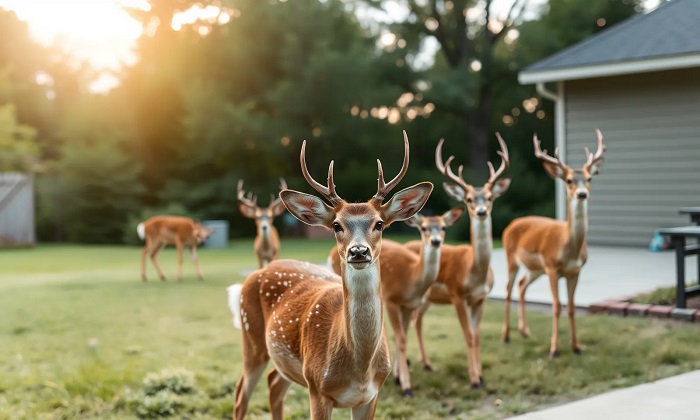If deer visit your backyard, you might wonder what to feed them to keep them healthy and happy. Deer are herbivores with a varied diet, including plants, fruits, and veggies. Here’s a guide on what to feed deer in your backyard.
What Kind of Vegetables Do Deer Eat?
Deer enjoy a range of veggies. Some of their favorites include:
Carrots: Carrots are deer favorite snack, being rich in vitamins and minerals, and deer love their sweet taste. Offer them whole or chopped up, and the deer will gladly munch on them.
Tomatoes: While not every deer’s first choice, many enjoy ripe and juicy tomatoes. Offer them in moderation, as too many can cause digestive issues.
Other Foods Deer Enjoy
Deer also enjoy:
Fruits: Sweet, juicy fruits like apples, pears, and berries are favorites. You can leave them whole or cut them into smaller pieces.
Nuts and Acorns: These are a natural part of a deer’s diet, providing essential fats and proteins. If you have nut-bearing trees, collect the fallen nuts and leave them out for the deer.
Leafy Greens: Lettuce, spinach, and kale are packed with vitamins and minerals, making them great choices.
Grains: Corn and oats can be a good supplement, especially in winter. However, offer grains in moderation, as they are high in carbs and low in essential nutrients.
What to Avoid
There are some foods you should avoid feeding deer:
Processed Foods: Avoid giving deer bread, crackers, and other human snacks, as these can cause digestive problems.
Meat and Dairy: Deer are herbivores, so avoid feeding them meat or dairy products, which can harm their health.
Salt Licks: While salt licks provide essential minerals, too much salt can be harmful. It’s best to consult a wildlife expert before offering them.
Check Your Local Feeding Regulations
Local feeding regulations are rules and guidelines set by government authorities, often at the state, county, or city level, that regulate the feeding of wildlife, including deer. These regulations are put in place to prevent issues like overpopulation, dependency on human-provided food, and the spread of diseases. In some areas, feeding wildlife is strictly prohibited or limited to certain types of food.
For example, some regions may have laws that restrict feeding deer because it can lead to unnatural congregation, increasing the risk of disease transmission among animals. Other areas might have specific seasons during which feeding is allowed or banned, depending on the availability of natural food sources.
It’s important to check with local wildlife agencies or conservation departments to understand the specific regulations in your area before feeding deer or any other wildlife. Ignoring these rules can lead to fines or other penalties, and more importantly, can harm the animals you’re trying to help.
Creating a Deer-Friendly Backyard
To attract deer, consider planting deer-friendly plants and trees like fruit trees, berry bushes, and nut-bearing trees. Providing a water source, such as a birdbath or small pond, can also help. Be sure to feed deer responsibly, using fresh food free of contaminants, and be aware of local regulations regarding feeding wildlife.
By offering a variety of nutritious foods, you can help the deer in your backyard stay healthy and happy. Enjoy the beauty of these gentle creatures as they visit your outdoor space!


